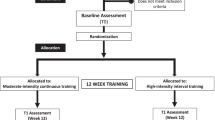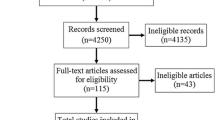Abstract
We aim to optimize post-stroke motor control rehabilitation therapy via integration of cardiovascular activity. Although stroke therapy ranges from months to years for some stroke patients, the majority of neurological recovery occurs within the first three months. Afterwards, neurological recovery occurs at a reduced rate for a period of up to one year. Current studies report that cardiovascular activity increases synaptic plasticity by affecting synaptic structure and potentiating synaptic strength, strengthening neurogenesis, metabolism and vascular function. Integrating cardiovascular activity in post-stroke motor control rehabilitation therapy may restore two-way communication between the central nervous system and extremities via growth of alternative central nervous system pathways; thus, resulting in improved motor control in both upper and lower extremities. We hypothesize that the neurotrophic factors engendered by cardiovascular activity significantly fortify descending motor pathways. In part one, functional magnetic resonance imaging (fMRI) and electroencephalography (EEG) quantify the level of brain activity resulting from upper extremity movement and lower extremity movement in two cohorts, each cohort consisting of four members. In part two, cohort one will perform 30 min of cardiovascular activity prior to 30 min of upper and lower extremity strength training five times a week for a total of three months. During this period, cohort two will perform only 30 min of upper and lower extremity strength training five times a week. In part three, fMRI and EEG will quantify the level of brain activity resulting from upper extremity movement and lower extremity movement in both cohorts. After data collection, juxtaposition of functional magnetic resonance images in conjunction with electroencephalograms during day one and during day ninety will occur in order to quantify the significance of cardiovascular activity integration in post-stroke motor control rehabilitation therapy.
Access this chapter
Tax calculation will be finalised at checkout
Purchases are for personal use only
Similar content being viewed by others
References
D. Mozaffarian, E.J. Benjamin, A.S. Go, et al. Heart disease and stroke statistics—2015 update: a report from the American Heart Association. Circulation. e29–322 (2015)
Y.H. Ding, M. Mrizek, Q. Lai, Y. Wu, R. Reyes, J. Li, W.W. Davis, Y. Ding, Exercise preconditioning reduces brain damage and inhibits TNF-α receptor expression after hypoxia/reoxygenation: an in vivo and in vitro study. Curr. Neurovasc. Res. 3, 263–271 (2006)
C.W. Cotman, N.C. Berchtold, L. Christie, Exercise builds brain health: key roles of growth factor cascades and inflammation. Trends Neurosci. 30(9), 464–472 (2007)
J. Black, K. Isaacs, B. Anderson, A. Alcantara, W. Greenough, Learning causes synaptogenesis, whereas motor activity causes angiogenesis, in cerebellar cortex of adult rats. Proc. Natl. Acad. Sci. U.S.A. 87, 5568–5572 (1990). doi:10.1073/pnas.87.14.5568
J. A. Kleim, N.R. Cooper, P.M. VandenBerg, Exercise induces angiogenesis but does not alter movement representations within rat motor cortex. Brain Res. 934, 1−6. doi:10.1016/S0006-8993(02)02239-4
R. Swain, A. Harris, E. Wiener, M. Dutka, H. Morris, B. Theien, S. Konda, K. Engberg, P. Lauterbur, W. Greenough, Prolonged exercise induces angiogenesis and increases cerebral blood volume in primary motor cortex of the rat. Neuroscience 117, 1037–1046 (2003). doi:10.1016/S0306-4522(02)00664-4
C.D. Wrann, et al. Exercise induces hippocampal BDNF through a PGC-1α/FNDC5 pathway cell metabolism. 18(5), 649−659
Author information
Authors and Affiliations
Corresponding author
Editor information
Editors and Affiliations
Rights and permissions
Copyright information
© 2017 Springer International Publishing AG
About this paper
Cite this paper
Rodriguez, J., Demircan, E. (2017). Efficacy of Cardiovascular Activity in Stroke Rehabilitation Therapy. In: Ibáñez, J., González-Vargas, J., Azorín, J., Akay, M., Pons, J. (eds) Converging Clinical and Engineering Research on Neurorehabilitation II. Biosystems & Biorobotics, vol 15. Springer, Cham. https://doi.org/10.1007/978-3-319-46669-9_43
Download citation
DOI: https://doi.org/10.1007/978-3-319-46669-9_43
Published:
Publisher Name: Springer, Cham
Print ISBN: 978-3-319-46668-2
Online ISBN: 978-3-319-46669-9
eBook Packages: EngineeringEngineering (R0)




